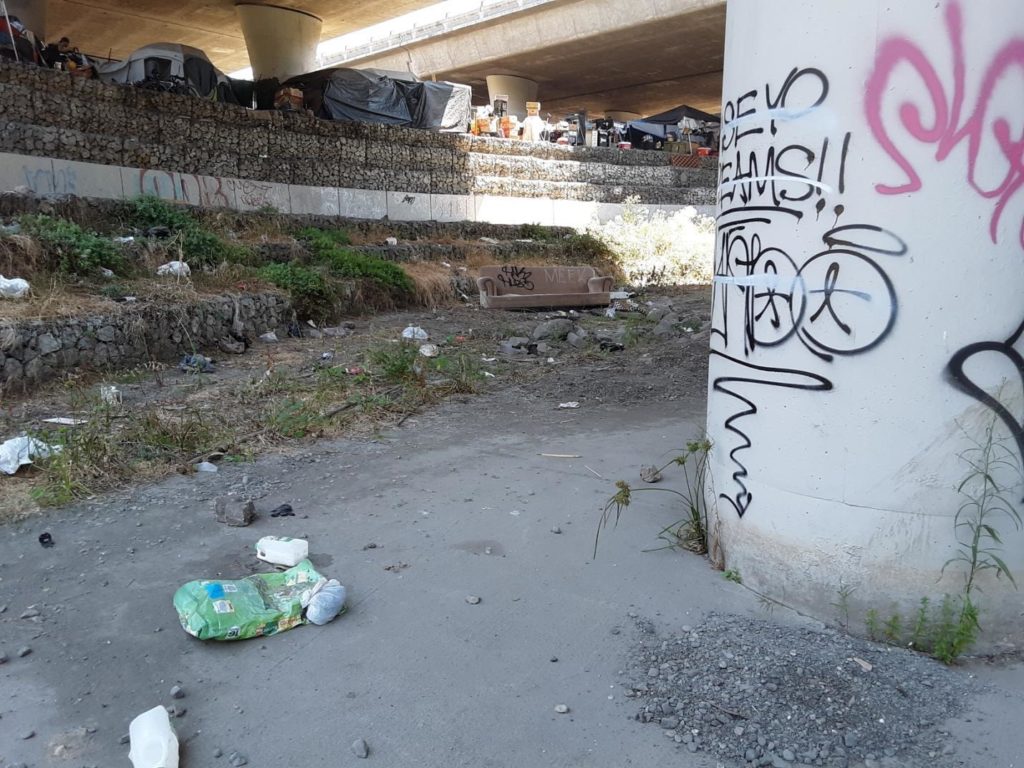The Sierra Club was forced to file a lawsuit against San Jose.
By approving a plan from Boston Properties, Inc. to build a massive glass facade office building—16 stories, 283 feet high, 800 feet long and with three levels of underground parking that egregiously provides no setback buffer between the building and the steep banks of the Guadalupe River and its forest—the City Council embraced a project that does not comply with the General Plan’s mandatory riparian protections, and thus it violates state planning and zoning law.
Protecting our public resources of the Guadalupe River, including this site on the eastern bank of the river across from the Children’s Discovery Museum and Discovery Meadow, should be a top priority for city leaders. For decades, residents, conservationists and city representatives worked together to develop policies and a general plan that sustain the ecosystem services of wildlife habitat, flood control, clean air and water and recreation that riparian corridors—our streams and their forest—provide.
Key are requirements that building developments be set back from the corridor’s edge. And by accepting what the Environmental Impact Report calls “cumulative significant and unavoidable impacts to the Guadalupe river,” the council showed utter disrespect for the river that this city was founded upon and to the residents who love and depend on the river.
The impacted lives and $100 million worth of damages caused by the 2017 flooding is but one of many examples of the long term costs associated with these shortsighted City Council actions, bowing to special interests just as their campaigns for reelection and mayor are launched, despite the important science behind stream policies and in the face of increased extreme weather events with climate change.
Riparian corridors are critical habitat linkages between large open lands for insects, terrestrial animals, migrating birds and salmon and steelhead fish migrating between the ocean and stream spawning habitat. Wildlife need cover and food sources in the grasses, shrubs and trees of protected streams that concrete channels fail to provide. The endangered fish need cool water shaded by a healthy forest.

People, too, need the river’s nature for peaceful, passive recreation that is so beneficial to physical and mental health. We need to expand our tree canopy to protect against the urban “heat island effect,” especially in the concretized downtown. But rather than protecting us against the increased temperatures with climate change, our mayor and City Council have allowed tree canopy cover to decrease from 15.36% in 2012 to 13.54% in 2018 citywide. The trend continues today.
Without riparian corridor building setbacks, streams have no flexibility to adapt to erosive flood events and soon concrete is poured.
And without setbacks, there are no natural pollutant filters. Without setbacks, flash runoff from hardscape causes flood waters to rise quickly. Without setbacks, wildlife have nowhere to escape the rising waters. Without setbacks, subterranean aquifers and underground hydrologic flows are disrupted. Without setbacks, noise and artificial night light disrupts natural feeding and mating behavior of insects, birds and other life resulting in decreased populations. Without setbacks, the unnatural shading, reflective heating, noise generating and reflecting of building facades degrade riparian plant growth and make trails unpleasant for humans.
Bird strikes into glass windows account for about 1 billion bird fatalities every year in the U.S. If we want to stroll the Guadalupe River Trail and find bird song rather than carcasses, we need buildings to be set back from the river.
We’ve already lost 95% of our riparian forests that once sprawled out for miles from winding streams, yet greed seems to be everlasting. We deserve a mayor and City Council that will follow the science that can protect and restore rather than follow special interests to the very brink.
Dave Poeschel is the Sierra Club Loma Prieta Chapter, Guadalupe Regional Group Conservation Committee chair and resides in San Jose.



Leave a Reply
You must be logged in to post a comment.